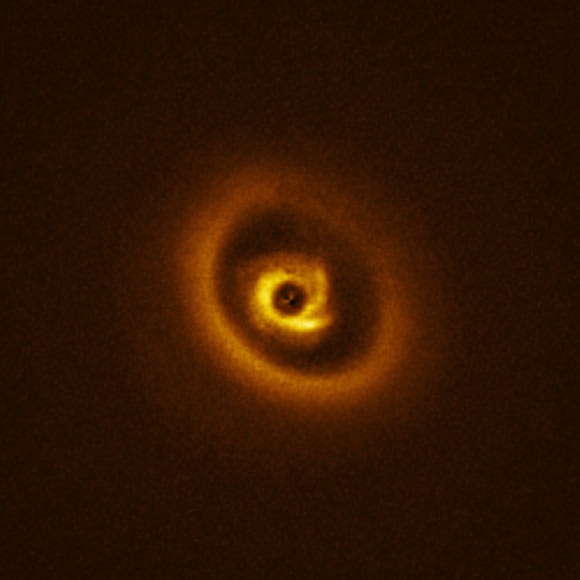Now Reading: Scientists Spot Potential Gas Giant in Formation Near RIK 113
-
01
Scientists Spot Potential Gas Giant in Formation Near RIK 113
Scientists Spot Potential Gas Giant in Formation Near RIK 113

Quick Summary
- Finding: astronomers using ESO’s Very large Telescope (VLT) captured detailed images of planet-forming protoplanetary disk structures around the star RIK 113, located approximately 431 light-years away in the constellation Scorpius.
- Key Features: Observations revealed a complex disk with rings and spiral arms. The inner ring has spiral characteristics, separated by a gap from an outer ring extending 115 AU.
- Potential planet Detection: Two possible signals of protoplanets were identified within the structured disk, indicating potential gas giants ranging between 0.1 to 5 Jupiter masses depending on model assumptions.
- Methodology: Initial discoveries came through ALMA’s analysis last year, followed by new imaging from VLT using its SPHERE instrument.
- Significance: The configuration closely fits theoretical predictions about how planets influence their parent disks during formation.Such systems are rare and provide valuable insights into early planetary formation processes similar to those of our Solar System.
- Uncertainty: Signals remain suggestive rather than confirmed; further studies are required for verification.
image:
!RIK113 system image
Credit: ESO / Ginski et al.
Indian Opinion Analysis
The discovery of intricate structures around RIK 113 could deepen humanity’s understanding of planetary evolution-a topic that directly relates to India’s growing ambitions in space exploration and interstellar research. As nation-states like India continue investing heavily in space technologies through prominent initiatives such as ISRO’s projects,findings like these reinforce the importance of international collaboration for scientific growth.
India has particular interest in leveraging astronomy for broader objectives like harnessing satellite technology or developing human capital capable of contributing to global astrophysics research. Hosting global facilities akin to VLT or ALMA could elevate India’s role as a pioneer in observational astrophysics, complementing its evident success with lunar missions.
Moreover, this study aligns with India’s commitment to advancing STEM education and inspiring future generations toward curiosity about universal phenomena-the very essence behind philosophies embedded within ancient Indian astronomy traditions.
Read More: Click here
























